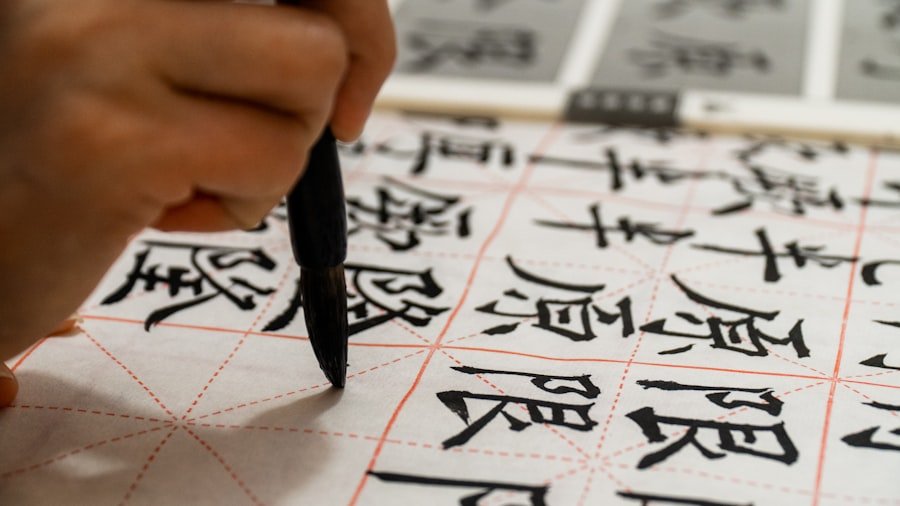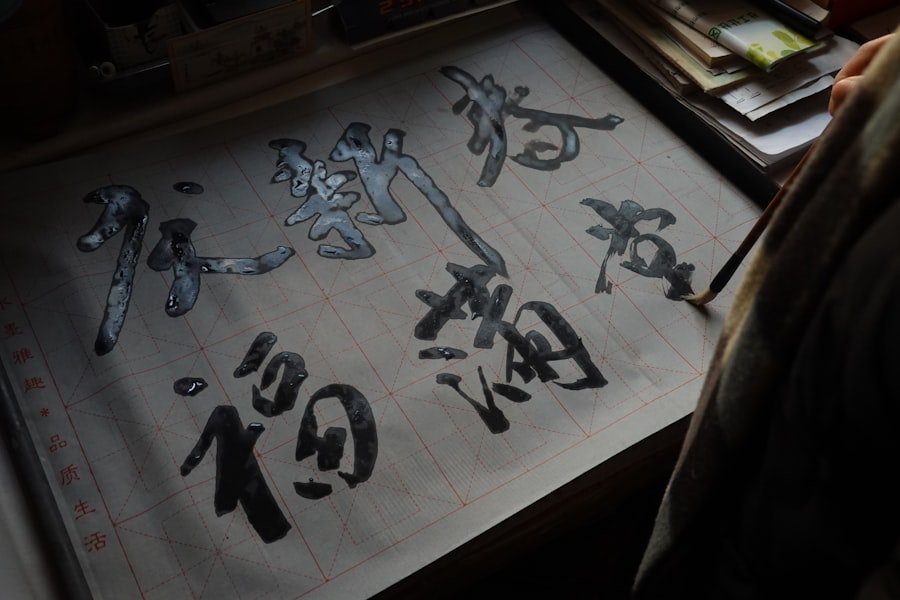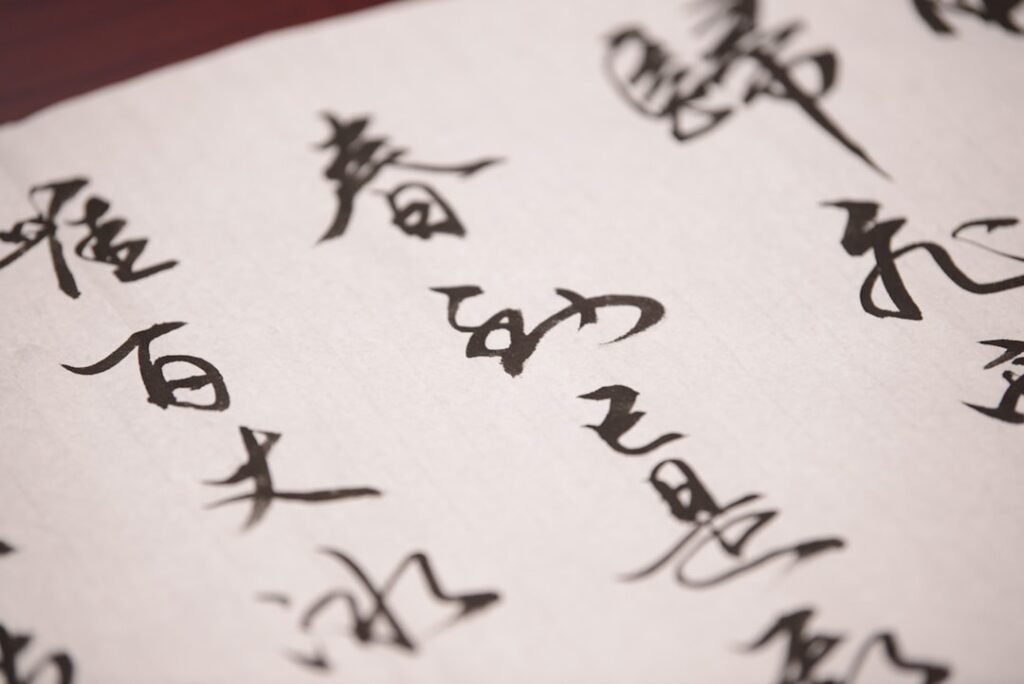Rice paper, known as “xuan zhi” in Chinese, has a rich and storied history that dates back over a thousand years. Originating during the Han Dynasty, this unique paper was initially crafted from the bark of the mulberry tree, but over time, the production process evolved to incorporate rice straw, which contributed to its distinctive texture and absorbency. The significance of rice paper in Chinese calligraphy cannot be overstated; it serves as the canvas upon which artists express their thoughts, emotions, and cultural heritage.
The delicate nature of rice paper allows for a fluidity of ink that is essential for capturing the essence of Chinese characters, making it an indispensable tool for calligraphers. The importance of rice paper extends beyond its physical properties; it embodies a cultural connection to the art form itself. Calligraphy is not merely about writing; it is a meditative practice that requires patience, precision, and an understanding of the materials used.
The choice of rice paper can influence the final outcome of a piece, affecting everything from the flow of ink to the overall aesthetic appeal. As such, understanding the history and significance of rice paper is crucial for anyone looking to delve into the world of Chinese calligraphy. Master the art of Chinese calligraphy. Enroll now at the LC Chinese School in Oslo.
Table of Contents
ToggleSummary
- Rice paper has a long history in Chinese calligraphy and is considered an essential material for this art form.
- There are different types of rice paper available, including raw, sized, and unsized varieties, each with its own unique characteristics.
- When choosing rice paper for Chinese calligraphy, factors to consider include absorbency, surface texture, weight, thickness, and colour.
- Surface texture plays a crucial role in rice paper for calligraphy, as it affects the appearance and quality of the brushstrokes.
- Rice paper comes in different weights and thicknesses, with lighter and thinner papers being more suitable for delicate and detailed work.
Exploring the Different Types of Rice Paper Available
When it comes to rice paper, there is a remarkable variety available, each type catering to different artistic needs and preferences. The most common types include Xuan paper, which is renowned for its high absorbency and smooth texture, making it ideal for traditional calligraphy. Another popular option is Shuen paper, which is slightly thicker and offers a more textured surface, allowing for bolder strokes and expressive writing.
Additionally, there are specialty papers designed for specific techniques, such as those used in painting or ink wash. Each type of rice paper has its own unique characteristics that can significantly impact the calligraphic process. For instance, some papers are designed to hold more ink, resulting in richer, darker strokes, while others may allow for a lighter touch, producing softer lines.
Understanding these differences is essential for artists who wish to achieve specific effects in their work. By exploring the various types of rice paper available, calligraphers can select the one that best aligns with their artistic vision and style.
Factors to Consider When Choosing Rice Paper for Chinese Calligraphy

Selecting the right rice paper for Chinese calligraphy involves several key factors that can influence both the writing experience and the final artwork. One of the primary considerations is the intended use of the paper. For instance, if an artist plans to create a piece that will be framed or displayed prominently, they may opt for higher-quality rice paper that offers durability and longevity.
Conversely, for practice or experimental work, more affordable options may suffice. Another important factor is the compatibility of the rice paper with different types of ink. Some papers are better suited for traditional Chinese inks, while others may work well with modern alternatives.
Additionally, the size of the paper should be taken into account; larger sheets may be preferable for expansive works, while smaller pieces might be ideal for intricate details. By carefully considering these factors, artists can make informed choices that enhance their calligraphic practice.
The Importance of Surface Texture in Rice Paper for Calligraphy
The surface texture of rice paper plays a pivotal role in determining how ink interacts with the paper during the calligraphic process. A smooth surface allows for fluid strokes and precise lines, making it easier for artists to achieve their desired effects. On the other hand, a textured surface can add depth and character to each stroke, creating a more dynamic visual experience.
This interplay between texture and ink is what makes rice paper such a fascinating medium for calligraphy. Moreover, the choice of surface texture can also influence an artist’s technique. For example, those who prefer bold, expressive strokes may gravitate towards more textured papers that allow for greater variation in line quality.
In contrast, artists seeking to create delicate and intricate characters may opt for smoother papers that facilitate fine detail work. Ultimately, understanding the importance of surface texture enables calligraphers to select papers that align with their artistic intentions.
Understanding the Different Weights and Thicknesses of Rice Paper
Rice paper comes in various weights and thicknesses, each contributing to its overall performance in calligraphy. Lighter papers are often more delicate and may require careful handling to avoid tearing or smudging. These papers are typically favoured by artists who appreciate a more ethereal quality in their work.
Conversely, heavier papers offer greater durability and can withstand more vigorous brushwork without compromising their integrity. The weight and thickness of rice paper also affect how ink is absorbed and distributed across its surface. Thicker papers tend to absorb ink more slowly, allowing for longer working times before the ink dries.
This can be advantageous for artists who wish to manipulate their strokes or blend colours on the page. Conversely, lighter papers may dry quickly, necessitating a more decisive approach to brushwork. By understanding these differences in weight and thickness, calligraphers can choose papers that best suit their individual styles and techniques.
Exploring the Different Absorbency Levels of Rice Paper

Absorbency is a critical factor in determining how ink behaves on rice paper during the calligraphic process. Different types of rice paper exhibit varying levels of absorbency, which can significantly impact the final appearance of a piece. Highly absorbent papers tend to soak up ink quickly, resulting in softer edges and a more diffused look.
This can be particularly appealing for artists who wish to create a sense of movement or fluidity in their work. On the other hand, less absorbent papers allow for sharper lines and more defined strokes, making them ideal for precise calligraphy where clarity is paramount. The choice of absorbency level can also influence an artist’s technique; those who prefer bold strokes may favour highly absorbent papers that allow for expressive brushwork, while those focused on detail may opt for less absorbent options that facilitate precision.
By exploring different absorbency levels, calligraphers can tailor their choice of rice paper to achieve their desired artistic outcomes.
The Impact of Rice Paper Colour on Chinese Calligraphy
The colour of rice paper can have a profound impact on the overall aesthetic of a calligraphic piece. While traditional white or off-white papers are commonly used for their versatility and ability to showcase ink beautifully, coloured rice papers offer unique opportunities for creativity and expression. Coloured papers can add depth and dimension to a piece, creating a striking contrast with black ink or allowing for innovative layering techniques.
Moreover, different colours can evoke various emotions or themes within a work. For instance, warm tones like beige or light yellow may impart a sense of warmth and nostalgia, while cooler shades like blue or green can evoke tranquility or contemplation. Artists should consider how the colour of their chosen rice paper aligns with their intended message or mood when creating a piece.
By understanding the impact of colour on their work, calligraphers can make more informed choices that enhance their artistic expression.
Understanding the Role of Sizing in Rice Paper for Calligraphy
Sizing refers to the treatment applied to rice paper that affects its absorbency and overall performance with ink. Papers with higher sizing levels tend to resist ink absorption more effectively, allowing for sharper lines and greater control over brushwork. This can be particularly beneficial for artists who require precision in their characters or wish to achieve specific effects with their strokes.
Conversely, papers with lower sizing levels absorb ink more readily, resulting in softer edges and a more fluid appearance. This type of sizing can be advantageous for artists who prefer a more expressive style or wish to create pieces with a sense of movement. Understanding how sizing influences ink behaviour on rice paper is essential for calligraphers seeking to achieve specific artistic outcomes.
By selecting papers with appropriate sizing levels, artists can enhance their control over their work while achieving their desired aesthetic.
Exploring the Different Brands and Quality of Rice Paper
The market offers a plethora of brands producing rice paper for calligraphy, each with its own unique qualities and characteristics. Some brands are renowned for their high-quality materials and craftsmanship, while others may focus on affordability or accessibility for beginners. It is essential for artists to explore various brands to find those that align with their specific needs and preferences.
Quality is another crucial aspect when selecting rice paper; higher-quality papers often feature superior texture, absorbency, and durability compared to lower-quality options. Investing in quality rice paper can significantly enhance an artist’s experience and results in calligraphy. By exploring different brands and assessing their quality, calligraphers can make informed choices that elevate their artistic practice.
Tips for Testing and Evaluating Rice Paper for Chinese Calligraphy
When selecting rice paper for Chinese calligraphy, it is beneficial to test and evaluate different options before committing to a purchase. One effective method is to create sample pieces using various types of rice paper to assess how each interacts with different inks and brushes. This hands-on approach allows artists to experience firsthand how each paper performs under different conditions.
Additionally, examining the finished results under various lighting conditions can provide insight into how colours appear on different papers. Artists should also consider factors such as ease of handling and how well each type holds up during extended use. By taking the time to test and evaluate different rice papers, calligraphers can make informed decisions that enhance their creative process.
Making Informed Choices: Selecting the Right Rice Paper for Your Chinese Calligraphy Projects
In conclusion, selecting the right rice paper is an integral part of mastering Chinese calligraphy. With an understanding of its history and significance, as well as knowledge about different types, weights, textures, absorbency levels, colours, sizing treatments, brands, and testing methods, artists are well-equipped to make informed choices that align with their artistic vision. For those eager to delve deeper into this beautiful art form, consider enrolling in Chinese calligraphy courses at LC Chinese School in Oslo.
These courses not only provide valuable insights into techniques but also offer hands-on experience with various types of rice paper under expert guidance. Whether you are a beginner or an experienced artist looking to refine your skills, LC Chinese School provides an enriching environment where you can explore your creativity through this timeless art form. Embrace the opportunity to learn about rice paper’s nuances while developing your calligraphic skills in a supportive community dedicated to preserving this cherished tradition.
Master the art of Chinese calligraphy. Enroll now at the LC Chinese School in Oslo.







